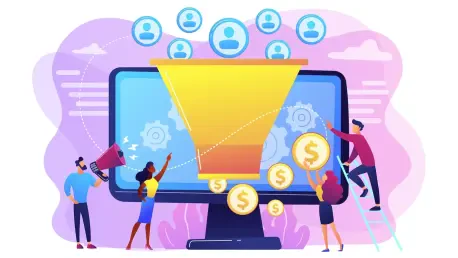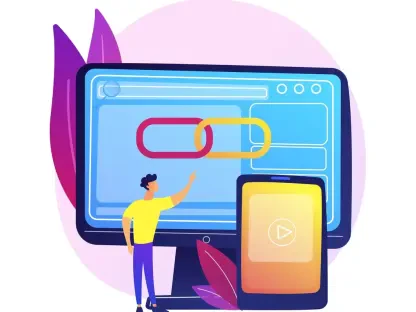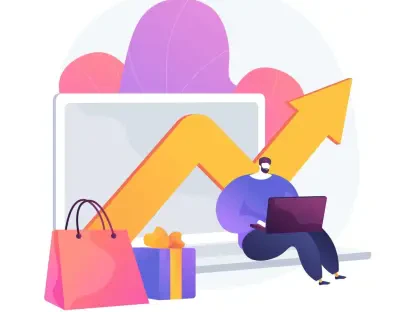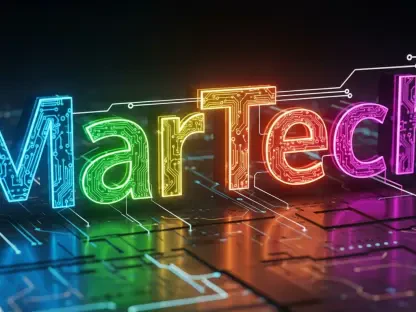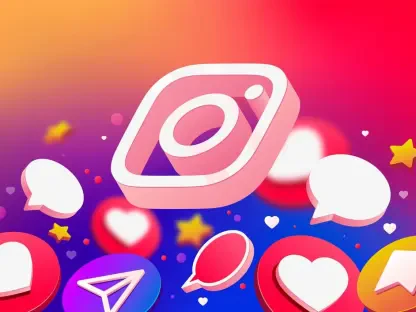Milena Traikovich, a prominent figure in the world of digital marketing, specializes in developing campaigns to attract high-quality leads. Her deep understanding of analytics and performance optimization has cemented her status as a trusted expert in the realm of demand generation. In this conversation, Milena shares her insights on the evolving landscape of NFT whitelisting as a potent tool for influencer-led lead generation, offering a sophisticated look at the strategies that make such campaigns successful.
What has led to the evolution of NFT whitelisting from a simple presale perk to a strategic lead-generation engine?
The shift in NFT whitelisting’s utility can be attributed to its transition from a mere early access incentive to a crucial stage in the sales funnel, driven by influencer marketing. Originally, whitelists were simple mechanisms for securing early-bird access, but now they have become essential for nurturing potential buyers through structured campaigns. The strategic use of influencer partnerships and community engagement creates a sophisticated lead generation machine, turning each whitelist slot into a gateway for cultivating prospects with measurable ROI.
How can brands leverage scarce allowlist slots to capture high-intent prospects and drive predictable mint conversions?
Scarcity plays a critical role in creating urgency among potential buyers. By limiting allowlist slots to a small percentage of the total NFT supply, brands can generate a sense of exclusivity that compels fast action. This sense of scarcity, coupled with meticulous selection processes and targeted engagements, not only entices high-intent participants but also ensures that mint conversions are predictable and aligned with marketing goals. This strategy helps streamline demand and aligns the brand’s messaging with consumer expectations.
What are some emerging patterns that are reshaping one-off giveaways into scalable campaigns with transparent ROI?
The evolution of one-off giveaways into structured campaigns is largely due to the integration of CRM systems, influencer collaboration, and community-driven activations. By using real-time data ingestion and gamified engagement tactics, brands can create campaigns with a clear and transparent ROI, transforming spontaneous giveaways into components of a finely-tuned marketing system. These patterns ensure that each giveaway contributes to a broader strategy aimed at sustainable growth and long-term community building.
How do projects utilize significant presale allocations for creators in influencer collaborations? Can you explain the benefits of this approach?
Creators receive substantial presale allocations which they use to promote projects across their platforms. This approach benefits projects by leveraging the creators’ reach and authenticity, enhancing credibility and driving interest. Additionally, it allows for a more focused and personalized engagement with potential buyers, as influencers can tailor their content to align with their audience’s preferences. The outcome is a valuable partnership that boosts both brand visibility and consumer trust.
How does on-chain verification benefit projects in filtering genuine advocates while sidestepping costly gas-war battles?
On-chain verification acts as a robust filter for identifying genuine participants who are invested in the project’s success. By verifying wallet information on the blockchain, projects can eliminate fraudulent entries and bots attempting to game the system. This not only ensures a fair distribution of whitelist slots but also bypasses the potential for gas fee surges during high-demand periods. The process supports a healthier launch environment, preserving both the project’s integrity and the participants’ experience.
Can you describe how gamified Discord quests and tiered ambassador programs contribute to the success of NFT whitelist campaigns?
Gamified Discord quests create an engaging and interactive way for community members to participate and earn whitelist slots. These tasks often involve community involvement, which fosters a sense of belonging and excitement. Tiered ambassador programs further motivate participation by recognizing and rewarding contributors based on their level of engagement, thereby enhancing community loyalty. This layered approach not only enriches the user experience but also amplifies word-of-mouth marketing through heightened community involvement.
How do marketers use real-time CRM ingestion and paid-media retargeting to enhance NFT whitelist campaigns?
Real-time CRM ingestion enables marketers to capture and organize leads efficiently, creating detailed profiles for targeted follow-ups. This data is crucial for tailoring communication and optimizing engagement strategies. Integrating this with paid-media retargeting allows marketers to reach potential participants who have shown interest but haven’t completed the conversion journey yet. These strategies combined offer a powerful tool for maintaining contact, building relationships, and driving conversions with precision.
What is the significance of framing whitelist mechanics as integral components of a structured influencer campaign lifecycle?
Positioning whitelist mechanics as essential parts of an influencer campaign lifecycle ensures that every stage of the campaign pipeline is connected and purposeful. It allows for synchronized planning and execution, aligning tasks such as lead sourcing, wallet verification, and metric reporting with influencer activities and expectations. This structured approach transforms whitelists into repeatable lead-generation playbooks, maintaining consistency and accountability across teams, and ensuring that each effort contributes to the overarching campaign goals.
Why is it important for agencies and in-house marketers to standardize terminology like “allowlist” and “whitelist”?
Consistency in terminology between “allowlist” and “whitelist” is crucial to avoid confusion among participants. It ensures all parties understand the incentives and rules associated with these lists, which is vital for setting clear expectations and ensuring a smooth user experience. Uniformity in language helps convey professionalism and establishes trust between the brand and its potential customers, enhancing the overall effectiveness of the campaign.
Can you explain the common whitelist models used by NFT projects? How do public form sign-ups, Discord-driven entries, and social media contests differ from each other?
Public form sign-ups are straightforward, collecting essential participant data through platforms like Typeform. Discord-driven entries leverage community involvement and engagement through tasks or gamification, serving both as a lead-capture mechanism and a community-building exercise. Social media contests, meanwhile, stimulate additional social engagement through creative challenges, which not only attract high-quality participants but also generate user-generated content. Each model offers unique advantages and can be strategically used depending on campaign goals and target audiences.
How does scarcity messaging enhance the effectiveness of whitelist campaigns? What techniques can be used to communicate scarcity to potential participants?
Scarcity messaging heightens urgency and drives action by highlighting limited availability. Techniques such as countdown timers, limited-time offers, and exclusive early-access opportunities can effectively communicate scarcity. By creating a sense of immediacy and exclusivity, these strategies motivate potential participants to act quickly, thus enhancing the overall impact of the campaign.
How can wallet verification be automated in NFT whitelist campaigns, and why is it important?
Automating wallet verification can streamline the entry process, ensuring only legitimate participants with valid wallet addresses gain access to the whitelist. This automation is important because it reduces manual errors, prevents fraud, and maintains the integrity of the list. Ultimately, it allows the project to focus on engaging with genuine participants, enhancing overall campaign efficiency and effectiveness.
What are some best practices for allocating whitelist slots, and how do tiered allocation strategies work?
Best practices for allocating whitelist slots include setting clear entry criteria, leveraging tiered allocations to prioritize key participants, and maintaining transparency throughout the process. Tiered allocation strategies assign slots based on participant categories or engagement levels, such as community contributors, influencers, or partners, ensuring that rewards are distributed fairly and incentivizing further engagement.
How does integrating whitelist mechanics into influencer briefs transform early-access lists into lead magnets?
Integrating whitelist mechanics into influencer briefs ensures alignment between marketing strategy and influencer execution. By including specific tasks and goals related to whitelists in the influencer briefs, brands can achieve clear deliverables that turn early-access lists into potent lead magnets. This approach not only boosts campaign efficiency but also ensures each influencer’s efforts contribute directly to capturing and converting high-quality leads.
What is the process of consolidating all whitelist sign-up vectors, and why is data ingestion important for sales funnels?
Consolidating whitelist sign-up vectors involves collecting entries from multiple sources into a unified system, such as a CRM. This data ingestion is critical for sales funnels as it provides a comprehensive view of potential leads, allowing for better segmenting, targeting, and nurturing efforts. A structured data approach ensures that every entry is accounted for and properly managed, enabling seamless integration into broader marketing strategies and sales conversion efforts.
How can lead scoring be used to assess the quality of prospects in an NFT whitelist campaign?
Lead scoring assigns values to prospects based on their engagement and interaction with the campaign, using criteria such as activity levels, past behavior, and on-chain credentials. This method allows marketers to prioritize high-quality leads, directing resources and personalized outreach accordingly. Effective lead scoring provides a mechanism for identifying the most promising prospects, ensuring the campaign focuses on converting the highest-value participants.
What role do trigger-based emails and progressive profiling play in CRM integration and automated workflows?
Trigger-based emails automatically communicate with prospects based on specific actions, such as signing up or verifying their wallets. Progressive profiling gradually gathers additional information from participants, enriching their profiles without overwhelming them. Together, these tactics enhance CRM integration by creating customized nurture flows that respond dynamically to user behavior, improving engagement and conversion rates while maintaining a seamless user experience.
How can dashboards and real-time KPI tracking help optimize NFT whitelist campaigns?
Dashboards and real-time KPI tracking provide vital insights into campaign performance, allowing marketers to make data-driven decisions quickly. By visualizing metrics like conversion rates, channel effectiveness, and engagement levels, teams can identify areas of strength and opportunities for improvement. This agility supports efficient resource allocation and strategy refinement, maximizing the campaign’s impact through constant monitoring and optimization.
What strategies can be implemented for post-mint retention and upsell to maintain engagement with successful minters?
For post-mint retention, strategies such as loyalty programs, exclusive content access, and ongoing community engagement are vital. Upsell opportunities can be generated through personalized offers, add-ons, or exclusive future mints. These efforts maintain interest and engagement among successful minters, creating a sustainable loop of interaction that enhances long-term value and brand loyalty.
How does the partnership with an NFT marketing agency benefit projects in the context of whitelist activation?
Partnering with an NFT marketing agency brings specialized expertise to the table, helping projects design and execute effective whitelist campaigns. Agencies offer insights into best practices, technical integration, influencer partnerships, and data management. This partnership allows projects to focus on their core offerings while relying on skilled professionals to manage the complexities of whitelist activation, ensuring successful outcomes.
Can you provide insights into the use of community engagement tactics like gamified quests and ambassador programs to enhance whitelist campaigns?
Gamified quests incentivize participation by making the process fun and rewarding, often involving tasks that enhance engagement and community bonding. Ambassador programs recognize and reward active participants, serving as a motivational tool for broader engagement. These tactics strengthen the community aspect of NFT projects, encouraging user involvement and fostering a loyal base that supports the campaign’s objectives and longevity.
Do you have any advice for our readers?
Focus on building authentic and meaningful connections within your community. By fostering genuine engagement and aligning your strategies with participant interests, you can create whitelist campaigns that not only capture leads but also nurture a thriving community that supports long-term growth and success.
